Ning Zhong
Brain Structure-Function Fusing Representation Learning using Adversarial Decomposed-VAE for Analyzing MCI
May 23, 2023Abstract:Integrating the brain structural and functional connectivity features is of great significance in both exploring brain science and analyzing cognitive impairment clinically. However, it remains a challenge to effectively fuse structural and functional features in exploring the brain network. In this paper, a novel brain structure-function fusing-representation learning (BSFL) model is proposed to effectively learn fused representation from diffusion tensor imaging (DTI) and resting-state functional magnetic resonance imaging (fMRI) for mild cognitive impairment (MCI) analysis. Specifically, the decomposition-fusion framework is developed to first decompose the feature space into the union of the uniform and the unique spaces for each modality, and then adaptively fuse the decomposed features to learn MCI-related representation. Moreover, a knowledge-aware transformer module is designed to automatically capture local and global connectivity features throughout the brain. Also, a uniform-unique contrastive loss is further devised to make the decomposition more effective and enhance the complementarity of structural and functional features. The extensive experiments demonstrate that the proposed model achieves better performance than other competitive methods in predicting and analyzing MCI. More importantly, the proposed model could be a potential tool for reconstructing unified brain networks and predicting abnormal connections during the degenerative processes in MCI.
MutualGraphNet: A novel model for motor imagery classification
Sep 02, 2021
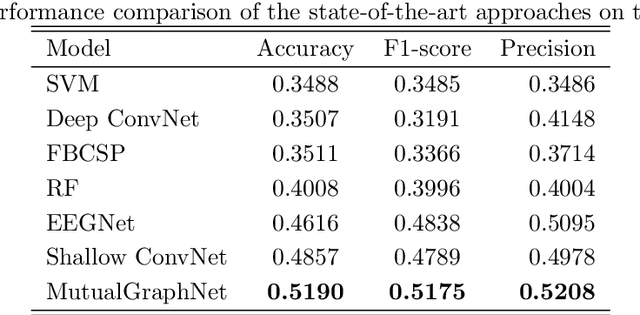
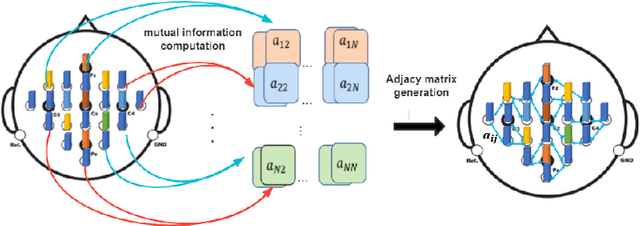
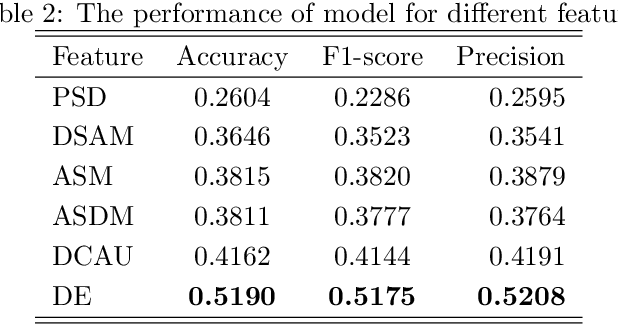
Abstract:Motor imagery classification is of great significance to humans with mobility impairments, and how to extract and utilize the effective features from motor imagery electroencephalogram(EEG) channels has always been the focus of attention. There are many different methods for the motor imagery classification, but the limited understanding on human brain requires more effective methods for extracting the features of EEG data. Graph neural networks(GNNs) have demonstrated its effectiveness in classifying graph structures; and the use of GNN provides new possibilities for brain structure connection feature extraction. In this paper we propose a novel graph neural network based on the mutual information of the raw EEG channels called MutualGraphNet. We use the mutual information as the adjacency matrix combined with the spatial temporal graph convolution network(ST-GCN) could extract the transition rules of the motor imagery electroencephalogram(EEG) channels data more effectively. Experiments are conducted on motor imagery EEG data set and we compare our model with the current state-of-the-art approaches and the results suggest that MutualGraphNet is robust enough to learn the interpretable features and outperforms the current state-of-the-art methods.
On Granular Knowledge Structures
Oct 26, 2008

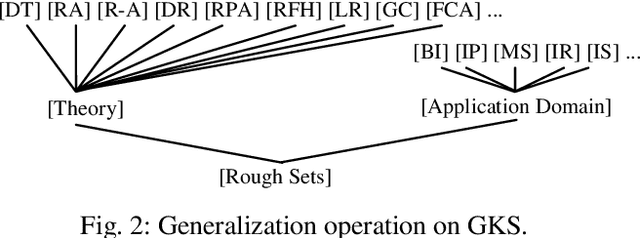
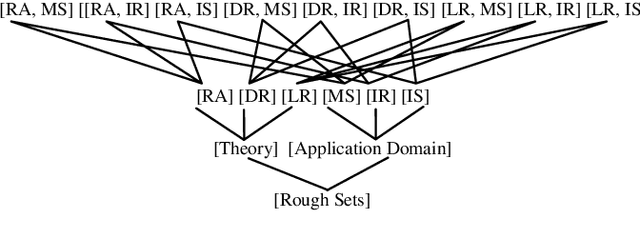
Abstract:Knowledge plays a central role in human and artificial intelligence. One of the key characteristics of knowledge is its structured organization. Knowledge can be and should be presented in multiple levels and multiple views to meet people's needs in different levels of granularities and from different perspectives. In this paper, we stand on the view point of granular computing and provide our understanding on multi-level and multi-view of knowledge through granular knowledge structures (GKS). Representation of granular knowledge structures, operations for building granular knowledge structures and how to use them are investigated. As an illustration, we provide some examples through results from an analysis of proceeding papers. Results show that granular knowledge structures could help users get better understanding of the knowledge source from set theoretical, logical and visual point of views. One may consider using them to meet specific needs or solve certain kinds of problems.
 Add to Chrome
Add to Chrome Add to Firefox
Add to Firefox Add to Edge
Add to Edge